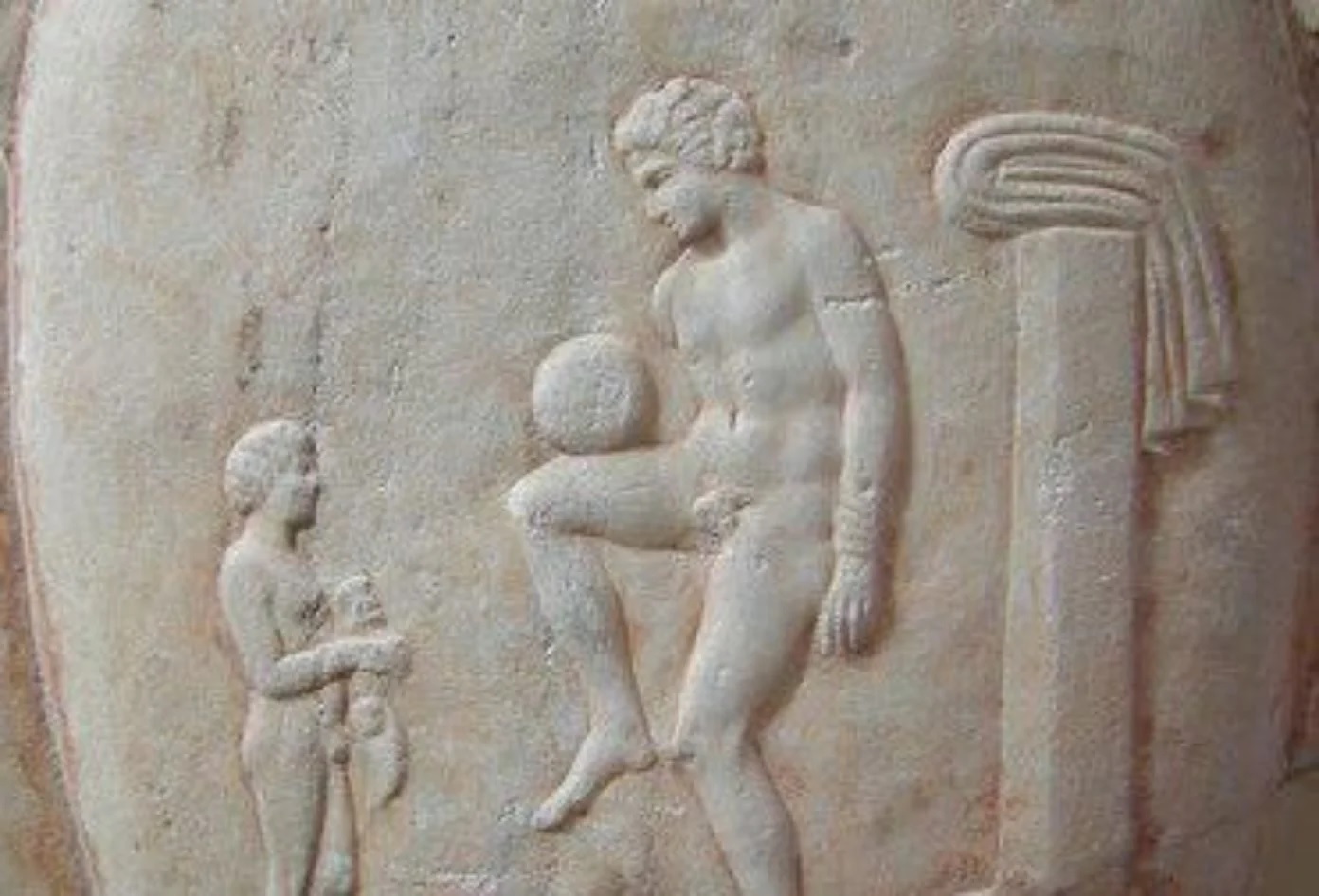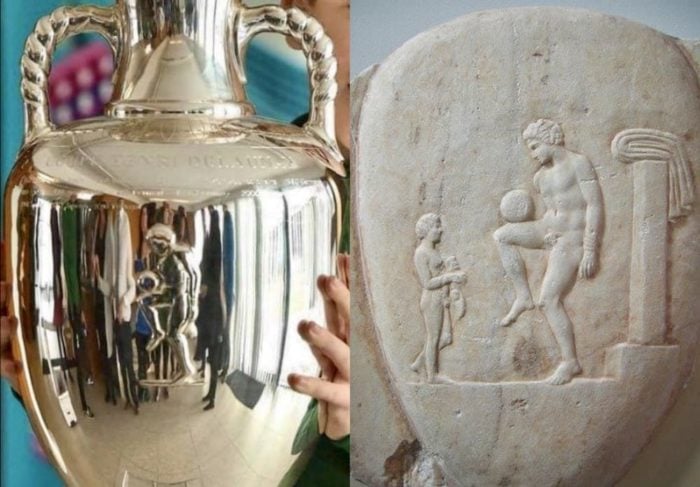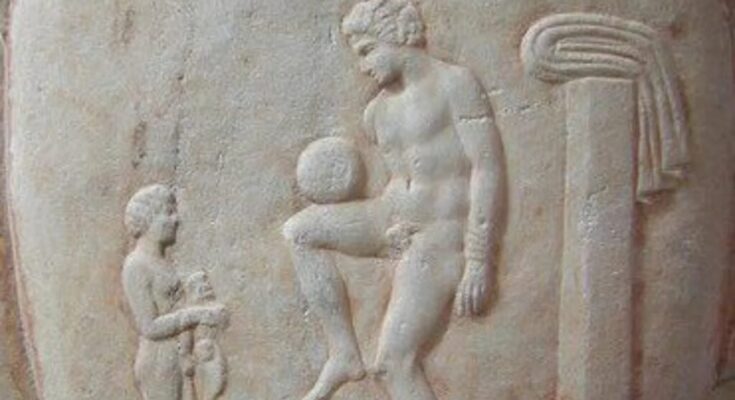
A relief exhibited at the National Archaeological Museum in Athens, Greece shows an ancient Greek youth practicing by balancing a football on his thigh in front of a small boy. This means that football, albeit in a primitive form, is at least 2,400 years old and very likely has its origins in ancient Greece.
Looking at this lovely ancient artifact today, one can say that the man seems to be showing his son how to control the ball like an ancient Greek Lionel Messi.
According to archaeologists, the depiction of the figure playing with the ball dates back to the third quarter of the 4th century BC (400-375 BC).
Football in Ancient Greece was called Episkyros
Episkyros was a football game played in ancient Greece between two teams of usually twelve to fourteen players each with one ball; the rules of the game at that time allowed the use of hands.
The objective was to throw the ball over the heads of the other team. There was a white line called the skyros between the teams and another white line behind each team.
The ball would change sides often until one team was forced behind the line at their end. Unlike modern football, Episkyros allowed full contact between players, making it a relatively violent sport.
Episkyros was particularly popular in Sparta, where it was often played as part of the Spartan youth’s military training. It is considered one of the most important ancient Greek sports and has had a significant influence on the development of modern football.
Later on, the Romans took over Episkyros, renaming it and transforming it into “harpastum,” a Latinization of the Greek word harpaston (ἁρπαστόν), meaning ‘snatching’ (the ball).
Episkyros turning into today’s football
The traces of Episkyros, the football of Ancient Greece, have been lost through the centuries as European powers shifted and societies changed.
But much like the ancient Olympic sports which have been transformed into the modern versions we watch today, so is today’s football adapting to ever-changing standards and eras.
Hence, as episkyros was the mother of today’s football, to paraphrase the English slogan, football came home, indeed, to Greece on July 4, 2004.
The story of the European Football (UEFA)

The idea for a European nations cup belongs to Frenchman Henri Delaunay. It was first conceived in the 1920s.
However, various social upheavals, along with hostilities between nations and World War II, put a halt in the realization of Delaunay’s bold vision.
It was up to Delaunay’s son, Pierre, who succeeded his late father as UEFA general secretary in 1956 to carry the torch that led to the decision for the UEFA Euro tournament.
Pierre Delaunay wanted the Cup awarded to the best European national football team as a way of paying tribute to the “godmother” of Europe, Greece.
“Europe is a word of Greek origin,” Delaunay explained to UEFA Direct in an interview in September 2005. “Europe certainly originated in the Mediterranean Basin, and Greece invented the Olympic Games.”
“So, I thought,” he continued, “it would be a good idea to find an ancient Greek artifact, depicting a ball if possible—something which was not particularly common—and reproduce this in the form of a trophy,” he noted.
A Greek journalist who was a friend of Constantin Constantaras, a member of the (UEFA) Executive Committee, found a sculpture of an athlete controlling a ball at the National Archaeological Museum in Athens.
“The Parisian silversmith Chobillon, who was commissioned to make the trophy, reproduced it on the cup, on the opposite side to the title,” Delaunay recounted.
The fact that the UEFA Euro takes place every four years may also be because the Olympic Games in Ancient Greece, and today, are held every four years.
It is also no coincidence that Pierre Delaunay chose to have the Euro taking place during the same year as the Olympics.



